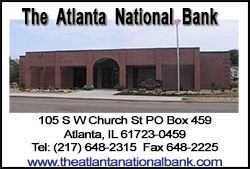|
 These special purpose acquisition companies (SPACs) have no assets
but use the IPO proceeds, together with bank financing, to buy other
companies and boost their value through operational improvements.
The companies that are acquired by SPACs go public without ever
going through the IPO process. These special purpose acquisition companies (SPACs) have no assets
but use the IPO proceeds, together with bank financing, to buy other
companies and boost their value through operational improvements.
The companies that are acquired by SPACs go public without ever
going through the IPO process.
SPACs have traditionally struggled to attract long term investors,
due to their complicated structure and investment risks. Instead,
they appealed to hedge funds and other opportunistic investors, who
bought into the SPAC only to take advantage of the structure's
inefficiencies.
But tweaks in their bylaws and leadership by a new crop of industry
veterans with acquisition experience are gradually making them more
mainstream.
As a result, Goldman Sachs Group Inc's biggest successfully
completed IPO assignment so far this year is not a red-hot
technology startup or a multibillion-dollar leveraged buyout; it is
an energy-focused SPAC called Silver Run Acquisition Corp, whose
$450 million initial public offering last month raised $50 million
more than originally planned.

It was the first SPAC successfully taken public by Goldman, which
served as an underwriter alongside Deutsche Bank AG and Citigroup
Inc, which have been working on SPACs for more than a decade.
Chinh Chu, a private equity veteran who ended a 25-year career at
Blackstone Group LP last year, is preparing to launch a $1 billion
SPAC and is working with Citigroup, Bank of America Corp and Credit
Suisse Group AG on its IPO, Reuters reported this week.
Another SPAC planning a $300 million IPO, Colony Global Acquisition
Corp, sponsored by real estate mogul and Donald Trump supporter
Thomas Barrack, is set to name Bank of America, JPMorgan Chase & Co
and Barclays Plc among its underwriters alongside already publicly
disclosed underwriter Credit Suisse, according to people familiar
with the matter. It would be Barclays' first U.S.-based SPAC IPO
since 2007 and JPMorgan's first since 2008. Representatives for
Colony and the banks declined to comment.
"It is becoming more fashionable, we are starting to see more banks
interested in the product," said Gregg Noel, a capital markets
partner at law firm Skadden, Arps, Slate, Meagher & Flom LLP.
Overall, U.S. IPO volumes are down 93 percent year-to-date, totaling
$317 million, as stock market volatility prevents many companies
from going public. SPAC IPO volumes, however, are up 26 percent over
the same period to $619 million, according to data compiled by
Thomson Reuters.
This is because SPAC IPOs are less vulnerable to market jitters,
since they have no existing business to fret over. Investors can
speculate about the companies SPACs will buy, but initially SPACs
are only worth the money they raise.
No data is publicly available yet on Silver Run's investor base, but
sources familiar with the offering said the investors included
traditional oil and gas investors, as well as long-term
institutional investors. Other IPOs of late, where shareholder
information is available, show that the SPAC investor base has been
slowly expanding.

Private equity firm TPG Capital LP's SPAC, Pace Holdings Corp, which
went public last year after raising $450 million, enticed Janus
Capital Management LLC, according to securities filings compiled by
Symmetric. Wilber Ross' $435 million WL Ross Holding Corp <WLHR.O>
attracted MFS Investment Management, TD Asset Management Inc and
Wellington Management.
The investment firms either did not respond to requests for comment
or declined to comment.
STRUCTURAL CHANGES
Typically, SPACs allow investors to redeem their common stock at the
IPO price if they disagree with a proposed acquisition. This can
challenge a SPAC's ability to write the equity check needed for a
potential acquisition.
[to top of second column] |

To address this, Chu and his partner in the new SPAC, William Foley,
chairman of the board of U.S. title insurance services provider
Fidelity National Financial Inc, have sought to attract some
cornerstone investors ahead of the IPO.
These cornerstone investors have committed not to redeem their money
if they disapprove of a proposed acquisition, giving the SPAC more
financing certainty to be able to go after the companies it wants.
Other structural changes SPAC managers are making include improved
disclosure over potential acquisitions, investment bankers and SPAC
participants said.
"We have been able to drive improvements in the structure so that
today it attracts high-profile sponsors and better transactions,
which in turn has attracted the attention of high-quality
investors," said Jeff Bunzel, head of Americas equity capital
markets at Deutsche Bank.
More private equity executives, well-seasoned in identifying and
managing acquisitions, are also launching SPACs, seeking to
diversify their buyout business.
"After a few years, (private equity) investors want you to realize
the gain ... you're kind of forced to sell things fairly quickly.
With a SPAC, our investors can each independently decide when they
want to sell their shares, and I don't have to liquidate my
position," said Wilbur Ross, whose SPAC announced this week an
agreement to buy U.S. chemical distribution company Nexeo Solutions
Holdings LLC for roughly $1.6 billion including debt.
SPOTTY TRACK RECORD
To be sure, many of the historical risks that SPACs entail remain
for both banks and investors.
Of the 130 SPACs that have completed an acquisition since 2003, the
average annual return has been a 15.3 percent loss, versus the
Russell 2000 index's annualized return of 4.5 percent over that
period, according to data provider SPAC Analytics.

There are 31 U.S.-based SPACs still looking for a deal, several of
which are coming up against their two-year deadlines to invest the
money they raised in their IPO or return it to investors.
For banks, roughly half their fees are paid after a SPAC's IPO, when
it finalizes an acquisition. Even when an attractive acquisition
target is found, SPAC shareholders can veto a deal.
"I say about raising the money, 'congratulations, 25 percent of your
work is done,'" said Neil Shah, head of alternative capital markets
at Citigroup.
Deutsche Bank and Citigroup have big SPAC practices, taking between
40 and 80 percent of the SPAC IPO proceeds every year since 2006,
according to Thomson Reuters data.
Other banks, however, have bulked up their SPAC capacity. For
example, earlier this year, UBS Group AG hired SPAC veteran Jeff
Mortara from Deutsche Bank. Last year, Credit Suisse hired another
Deutsche Bank SPAC practitioner, Niron Stabinsky.
(Reporting by Lauren Hirsch in New York; Additional reporting by
Jessica DiNapoli in New York; Editing by Greg Roumeliotis and
Matthew Lewis)
[© 2016 Thomson Reuters. All rights
reserved.] Copyright 2016 Reuters. All rights reserved. This material may not be published,
broadcast, rewritten or redistributed.

 |